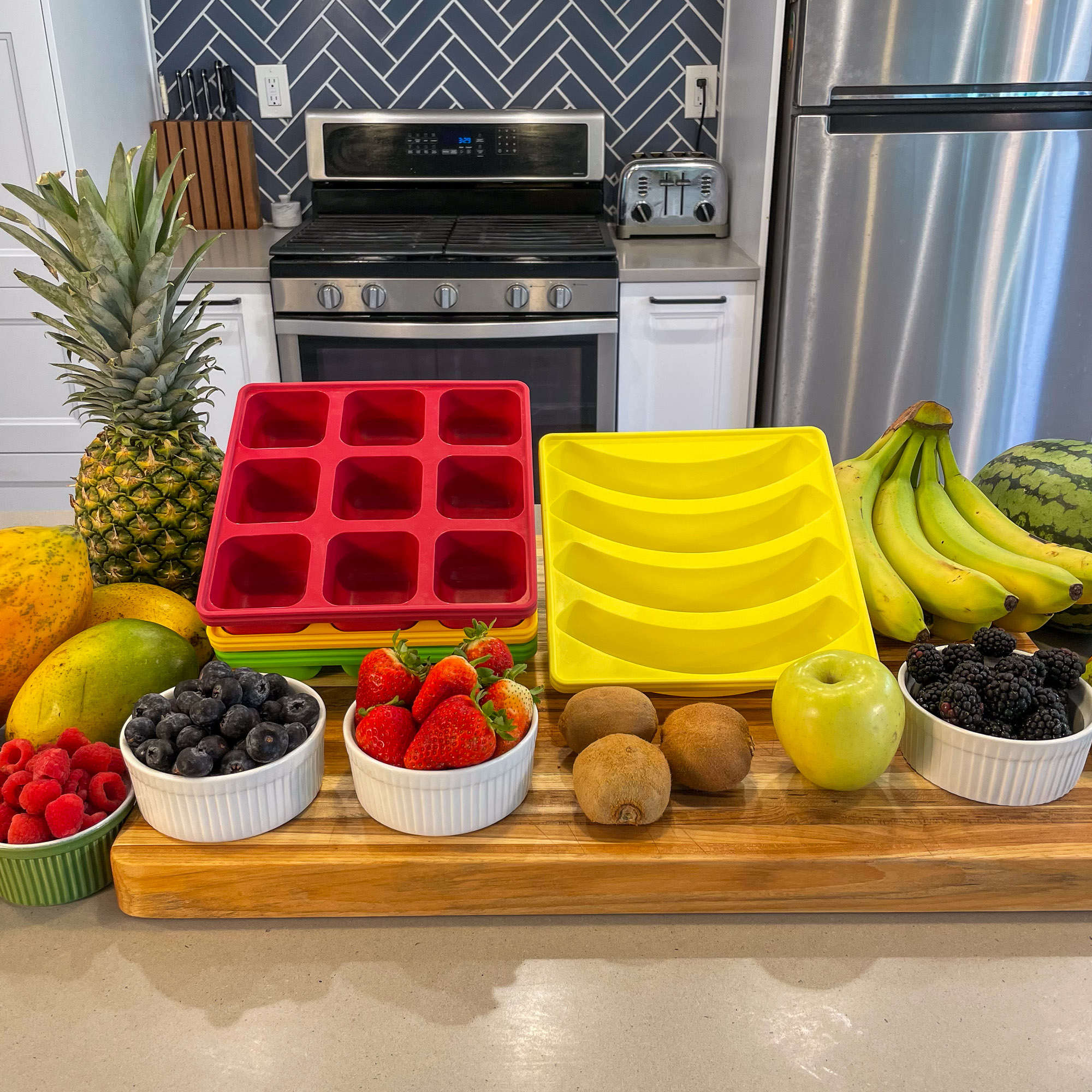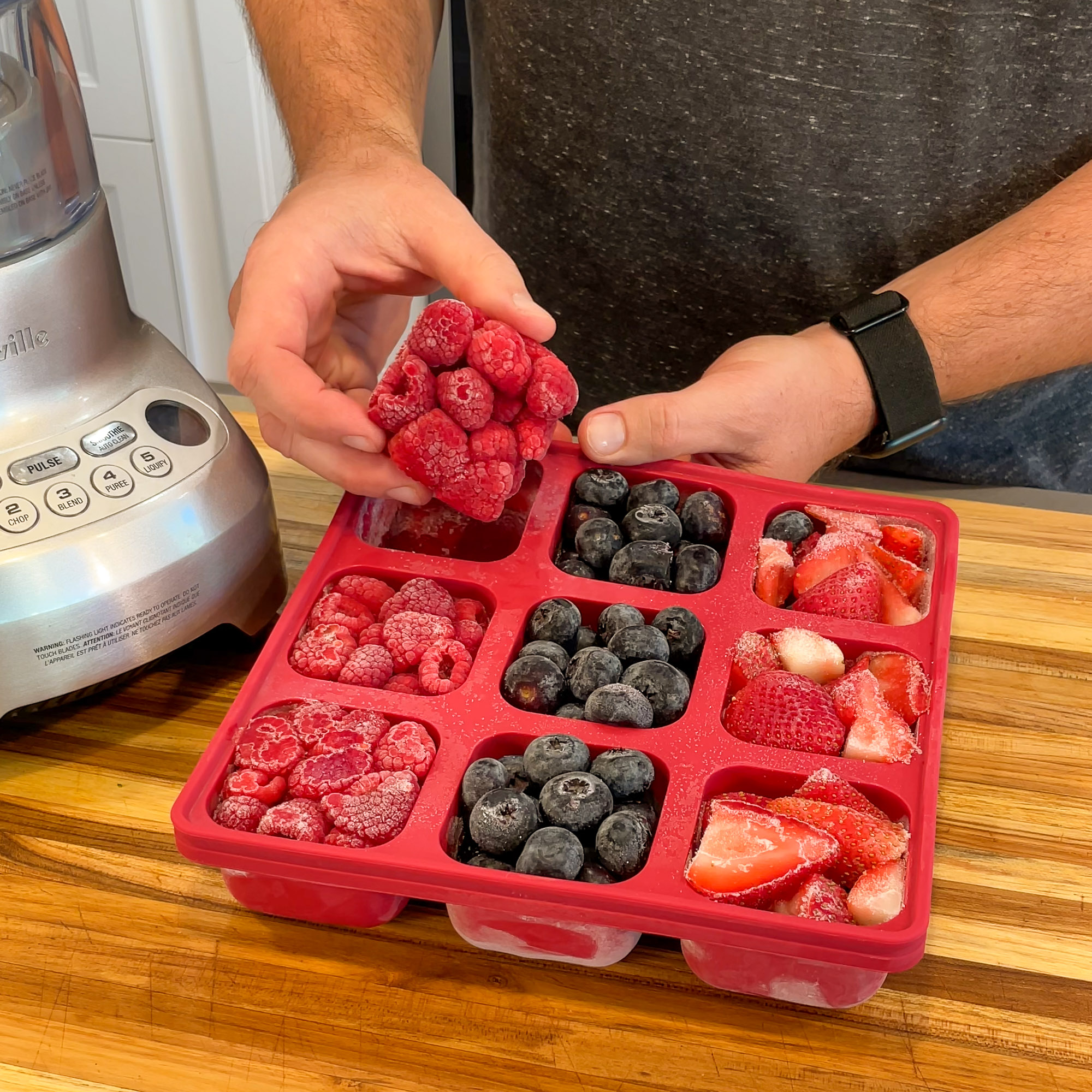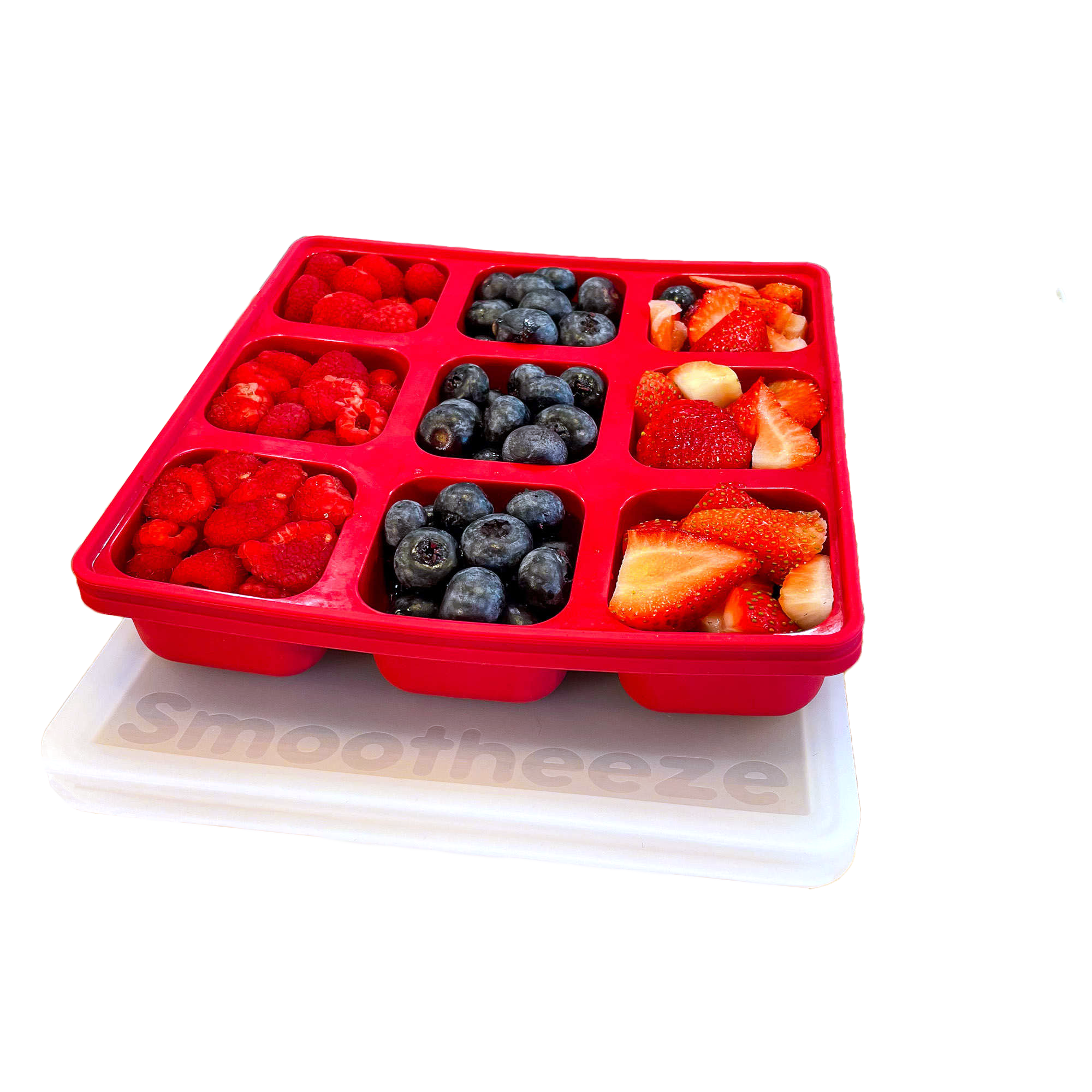Learn everything you need to know about making the perfect smoothie.

Welcome to the delightful world of smoothies – the go-to solution for those mornings when time is short or when you’re simply seeking a burst of nutrition without the fuss.
Smoothies are the ultimate culinary sidekick. Ready to whirl into action in just minutes, they make the perfect breakfast, afternoon snack, meal replacement drink, or even dessert.
Sure, you could just pick up a drink from your favorite smoothie shop but they can cost an arm and a leg – hello inflation! Smoothies are simple to make but there is an art to getting deliciously creamy, social media feed-worthy blends
This isn’t just about following recipes—it’s about mixing, matching, and making magic in a glass, there are endless ways to use different bases, fruits, greens, add-ins, and ingredients you might not have even considered.
So, grab your blender and your favorite fruits because we’re about to embark on a journey to smoothie perfection. From selecting the right ratio of ingredients to achieving the perfect texture, consider this your all-in-one guide to becoming a smoothie whisperer.
Making a smoothie isn’t rocket science, but there’s a method to the madness.
Here’s how to lay the foundation for your liquid masterpiece and make the perfect smoothie, no matter your preferred flavor profile.

When it comes to selecting fruit for your main ingredients, it’s tough to make a bad call.
Making a tomato smoothie might be taking it too far, though – you’re essentially in Bloody Mary territory at that point.
Go with the classics, including
You can expand your smoothie repertoire by using
The possibilities are truly endless – explore and experiment depending on the season or to satisfy your unique cravings. Start with 1.5 cups of fruit as the base for any smoothie.
Want to dive deeper? Check out our exposé, Selecting the Perfect Fruits for Smoothies.
To freeze or not to freeze smoothie ingredients, that is the question. It’s the ultimate showdown with staunch supporters on both sides. Frozen fruits give your smoothie that ice-cream-like texture without watering it down (hello, thick and creamy goodness!).
Fresh fruits, on the other hand, offer vibrant flavor with a thinner, more juice-like consistency. Why not mix and match? Live on the wild side.
Bananas are typically a staple smoothie ingredient and work best when frozen. Searching for the best way to freeze bananas is what led us to start Smootheeze.
We love frozen bananas and the rich, creamy texture it gives smoothies, but we know bananas aren’t for everyone – maybe you’re allergic or just don’t like the taste. If that’s the case, try going with frozen for a least one of the main ingredients, or add in a handful of ice cubes for a thicker, frosty blend.
Water, almond milk, oat milk, juice, or coconut water? The choice of liquid can make or break your smoothie. It’s about balance. Milk (dairy or non) brings creaminess, while juices add sweetness (and extra sugar).
Water’s great for keeping things light. Let’s not even get started on coffee or tea bases – that’s advanced-level smoothie wizardry.
Again, the choice here is yours depending on the flavor you like, dietary restrictions, or desired health benefits like extra electrolytes, antioxidants, or energy boosts.
Start with 1 cup of liquid and adjust as needed for the desired consistency.
PRO TIP: 1 cup of liquid is good for a smoothie with a mix of fresh and frozen ingredients.
But if you are going with all frozen ingredients you’ll need to start with 1.5 to 2 cups of liquid.
The thickness of your smoothie is a personal choice. Like your smoothies thick enough to support a spoon? Frozen fruit, bananas, and yogurt are your best friends.
Not a fan of bananas or want to skip the dairy? Avocados, nut butters, and even silken tofu can step in as understudies.
If you like thinner smoothie drinks, you can always add more liquid to a recipe or skip adding ingredients like yogurt or emulsifiers altogether.
But if you’re looking for different ways to make creamy smoothies, there are plenty of options. It will just take a little trial and error to get it just right depending on what you choose.
Here are some general guidelines:
You’ve chosen your base fruits and liquid and achieved the perfect thickness, now it’s time to level up your smoothie with add-ins.
This is where you can truly make your smoothie your own. Want a nutritional boost? Toss in some chia seeds, flaxseeds, or a scoop of protein or acai powder. Feeling adventurous? A pinch of turmeric, ginger, cinnamon, or even a dash of cayenne pepper can turn your smoothie from meh to magnificent.
Dial up the sweetness by adding honey or agave. Or infuse a deeper flavor with vanilla or almond extract. Freshly squeezed lemon or lime juice can add a refreshing brightness to any basic recipe.
Think of these ingredients as flavor-packed or nutrient-dense blender boosters that work best in smaller amounts. Since the flavors are more concentrated, typically 1 teaspoon up to 1 tablespoon is all you need, depending on the ingredient.
This is also a great point to add in a bit of spinach or kale if you’re looking for an easy way to get in more greens in your diet. You don’t have to go all in with a super green smoothie recipe, but just a small handful of leafy greens is all you need for a slight nutritional boost.
The secret to a perfectly blended smoothie? It’s all in the layering.
Start with liquids, add soft ingredients (like fresh fruits, yogurt, and add-ins), and top with frozen goodies. This helps your blender smoothly transition from easy to hard-to-blend items, preventing those dreaded air pockets.
Making smoothies is generally pretty simple and it’s hard to go totally wrong. The biggest trick is getting the ratio of liquid to solid ingredients correct. Here’s your blueprint for smoothie bliss:
Start on a low setting to chop up the big pieces, then crank it up to high for that ultra-smooth texture. If your smoothie’s too thick, don’t be afraid to add a splash of more liquid. Too thin? Throw in a couple of ice cubes or a pinch of your base fruit.
Blend everything for 1-2 minutes to help break down all of the ingredients which will create a more consistent, creamier texture.
If your blender hits an air pocket and stops blending, use a spoon or spatula to mix the ingredients. Then start adding another 1/4 to 1/2 cup of your liquid base until the blender creates a vortex, pulling the ingredients towards the blade.
Here’s where it’s helpful to make mental notes or even open a new note on your phone to keep track of these customizations so you can nail your smoothie recipe every time.

There is no shortage of blenders on the market, which makes it tough to choose the best.
You don’t necessarily need it to be the most expensive one but you also want a quality product that lasts.
After searching ratings, reviews, and customer Q&A, here’s our breakdown of the best blenders for smoothies.

When it comes to prepping your smoothies, the name of the game is convenience. That’s why you can simply go to the grocery store and pick up frozen packages of fruit or smoothie packs.
There are two issues with that approach:
That’s why Smootheeze freezer trays exist – to make it convenient to prep and freeze a wide variety of ingredients.
Plus, it’s super easy to mix and match ingredients to change up your smoothie recipes by simply popping out pre-portioned amounts in seconds.
There are several good options for freezing smoothie ingredients, let’s break them down.
Check out the easy banana freeze tray along with 1/2 cup smoothie cube freezer trays.
Reusable silicone bags a great for storing a wide variety of food and leftovers.
Search for freezer containers on Amazon and you’ll find a plethora of plastic containers and silicone trays.
Meal prep freezer containers aren’t purpose-built for smoothie lovers. They typically feature storage compartments that are 1 cup and larger.
Smootheeze trays feature 1/2 cup portions which is the perfect amount for making a wide variety of smoothie recipes.
There are quite a few container options for freezing ingredients with different pros and cons. But if you’re not ready to go that route, there are other DIY options you can try.
You want to avoid putting a large amount of fresh ingredients together since they will freeze together in one big clump. Here’s a quick rundown of the options to freeze ingredients so they don’t stick together.
The biggest issues with these methods are that they are time-consuming with multiple steps and require using an excessive amount of single-use plastic.
Check out The Ultimate Collection of Timeless Smoothie Recipes and take your smoothie game to the next level!

Learn more about freezing different types of smoothie ingredients.
Dive deeper into making smoothies.
Enter your email and subscribe to get helpful smoothie making tips, featured recipes, and product news.
We’ve got you covered with answers to all of your questions about Smootheeze freezer trays and making smoothies.

Smootheeze silicone freezer trays help you effortlessly freeze individual portions of smoothie ingredients so they don’t stick together – without single-use plastic.
Our products are made from 100% platinum silicone – a high-purity, food-safe material that’s BPA-free – allowing for easy release of ingredients from the tray.
Smootheeze trays are very durable and are endlessly reusable. Say goodbye to single-use plastic in your smoothie routine.
Smootheeze helps you explore endless recipe possibilities. Break free from the routine.
The color-coded tray design allows you to easily store ingredients by type and mix and match to try new recipes.
Plus, your freezer will never be more organized.
Stackable and low-profile, Smootheeze trays maximize freezer space, allowing you to neatly store a wide variety of ingredients while leaving plenty of room for other essentials.
Smootheeze is the easiest way to prep perfectly portioned ingredients – organize ingredients by type in 1/2 cup portions.
Yes! Our trays can be hand-washed and are dishwasher-safe. Soap residue can build up over time on silicone, see our full care instructions to learn about deep cleaning.
We want you to be 100% satisfied. Return your order for any reason within 60 days. We also offer a 1 year warranty if any issues arise with the normal use of the product. See here for more details.